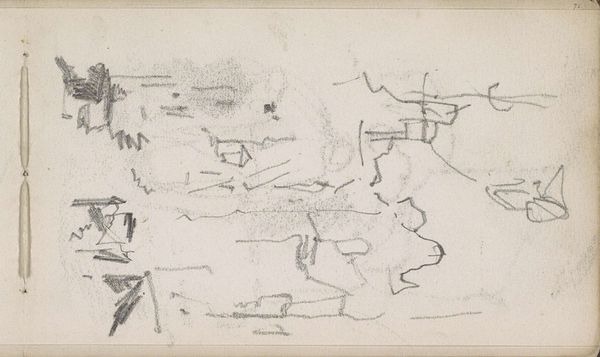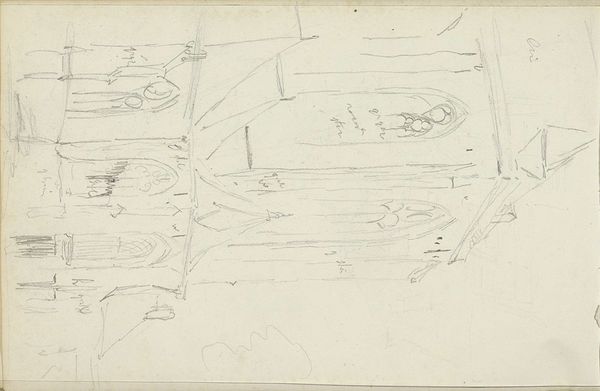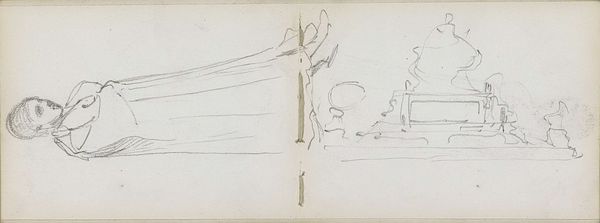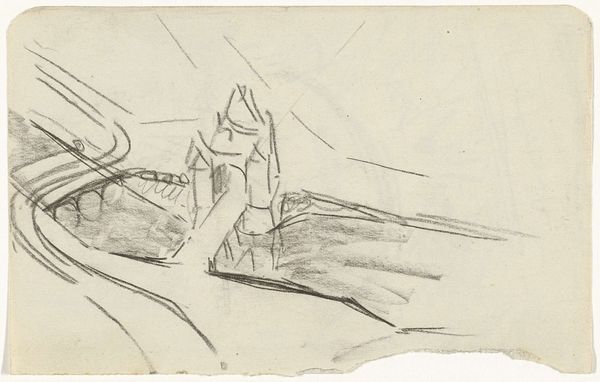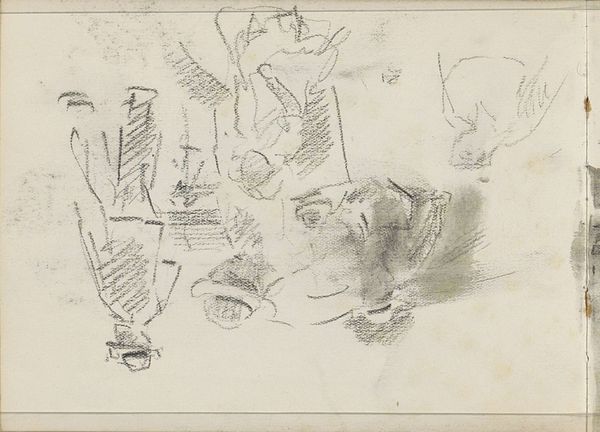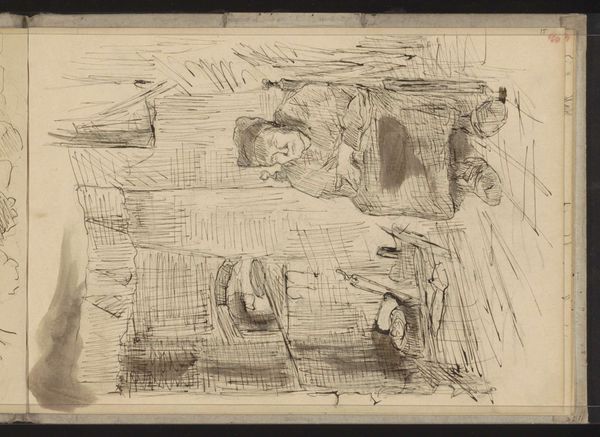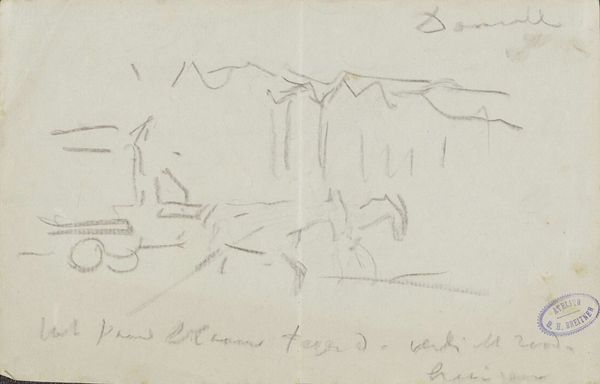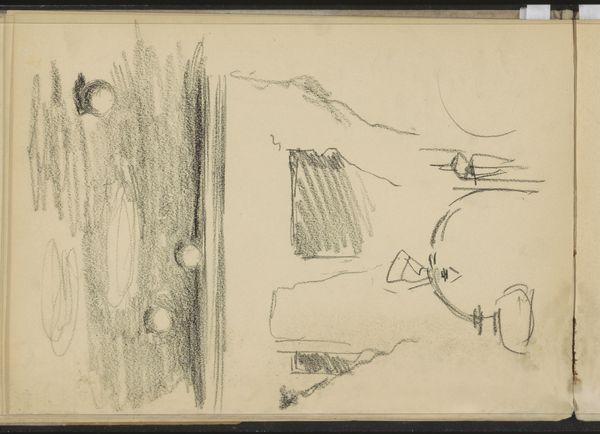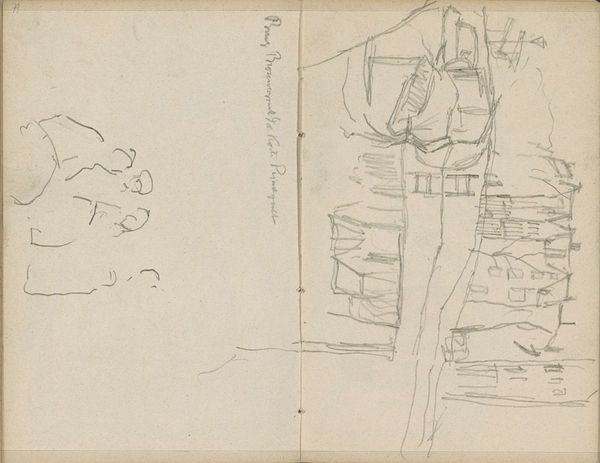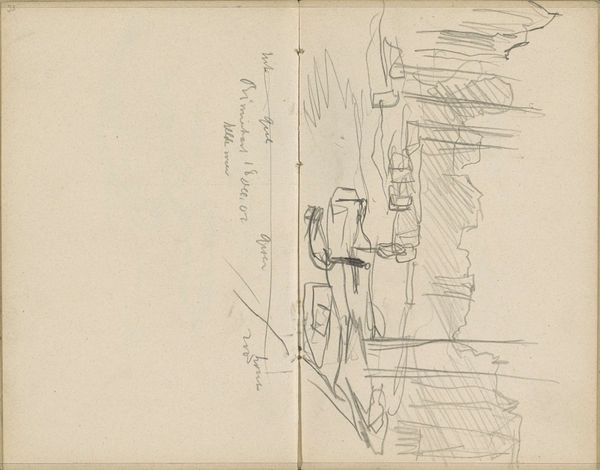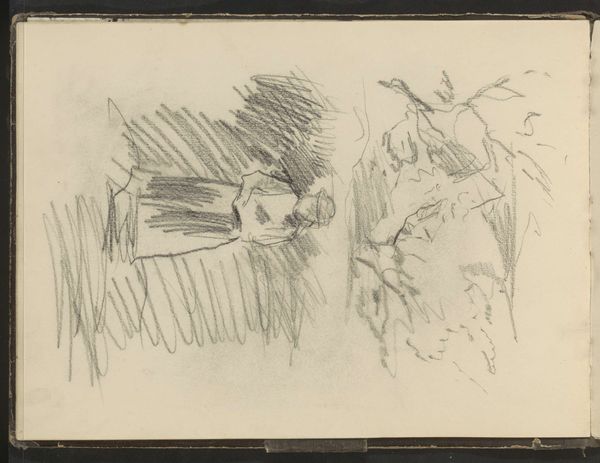
drawing, paper, ink
#
portrait
#
drawing
#
pen sketch
#
sketch book
#
figuration
#
paper
#
personal sketchbook
#
ink
#
sketchwork
#
ink drawing experimentation
#
pen-ink sketch
#
abstraction
#
pen work
#
sketchbook drawing
#
storyboard and sketchbook work
#
sketchbook art
Copyright: National Gallery of Art: CC0 1.0
Curator: Here we have "Isabel Bishop Early Sketchbook" from sometime between 1928 and 1936. It’s a fascinating glimpse into her process, executed in ink on paper. Editor: My first impression is one of raw intimacy. It feels like peering over the artist's shoulder, witnessing thoughts taking shape. The sketches seem quick, capturing fleeting moments. Curator: Absolutely. Sketchbooks function almost like palimpsests of the artist's mind. Note the recurring figuration here – Bishop's lifelong fascination. She returned time and again to images of the everyday pedestrian. Editor: I'm intrigued by the fragmented nature of these figures, which evokes themes of displacement and anonymity, reflecting the socio-economic anxieties brewing in New York between the wars. The absence of complete figures raises questions about visibility, representation, and the lived experiences of those on the margins. Curator: And this relates so deeply with Bishop's training with Kenneth Hayes Miller, of the Fourteenth Street School, doesn't it? The focus on observation, almost documentary-like. This is so clear from these dynamic groupings rendered simply in line, conveying motion and attitude economically. The abstraction almost seems a key to its emotional realness. Editor: These rapid pen strokes, with minimal detail, encourage the viewer to engage actively in constructing a narrative, mirroring how we navigate incomplete narratives in reality. It also reflects Bishop’s political agenda; an intervention in artistic narratives, one of feminist self-assertion, portraying women’s lives. Curator: Looking at these pages, one gets the sense of something ancient as well—echoes of the Lascaux cave paintings, these furtive moments rendered on a primitive support with a primal medium: a powerful continuity across eras and cultures. Editor: Yes, this feels more immediate now that you point it out: It also raises crucial questions about archiving marginalized voices and reclaiming overlooked artistic narratives within the larger canon of art history. Curator: This has provided fresh ideas about the ways women have constructed symbols about the interior and the external reality. Editor: Indeed, it reminds us how critical it is to support art historical discourse.
Comments
No comments
Be the first to comment and join the conversation on the ultimate creative platform.
